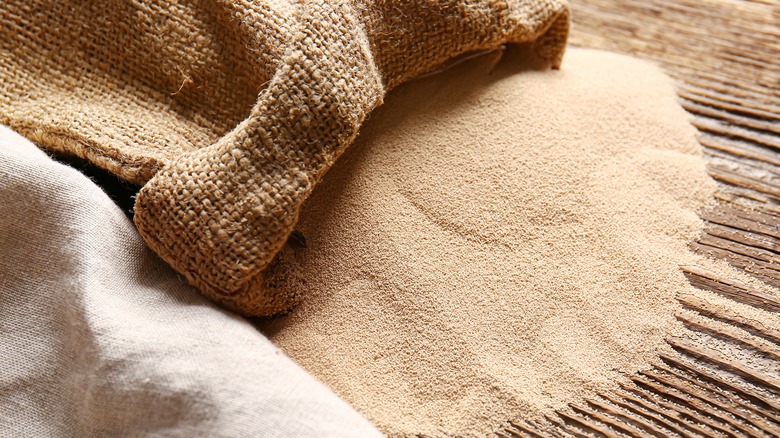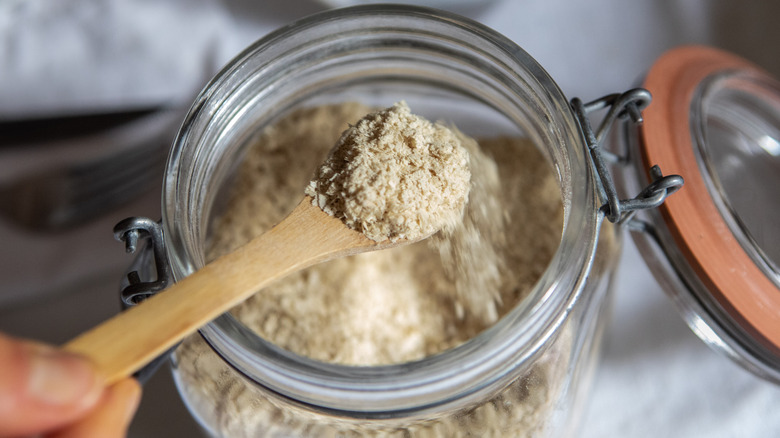Here's How You Should Be Storing Your Yeast
Yeast is an essential ingredient that makes bread rise. According to Red Star Yeast, these living organisms we buy in little packets contain over 200 billion active yeast. But surprisingly, the jars that store yeast are responsible for transforming flour, sugar, and water into the glorious carb we slather with butter, avocado, peanut butter and jelly, and more. Bread is, without a doubt, a pretty amazing food, but it certainly would not be the same without yeast. The site explains that the yeast is actually eating and digesting the sugar in the dough and releasing gases causing it to rise.
Yeast is not a new discovery. This fungus has been around for 5,000 years, per Scientific America, since people in Egypt were using it to make beer, bread, and even wine through fermentation. Yeast is truly a wow ingredient. Scientific America says that yeast was held in such high praise that it was even found in the tomb of the Scorpion King. But for yeast to do its thing and help foods and beverages reach their optimal flavor potential, yeast must be stored and maintained properly.
You will need an airtight container
According to King Arthur's Flour, you want to store yeast in an airtight container. They suggest either a glass or acrylic container if you bought packeted yeast. The site notes that yeast should be stored in the freezer and can be for the entirety of a single calendar year. A key tip for storing large quantities of yeast, according to the site, is divvying it up into smaller amounts, then storing it in an airtight, resealable plastic bag. Then, when you are ready to use it, all you have to do is measure out the amount you need and then return your container of yeast to the freezer. It should take anywhere from 30 to 45 minutes to be ready to use.
How long can you expect to have your yeast maintain its freshness? According to Simpy Recipes, up to two years. That's right. The cold gives unopened yeast a longer shelf life. However, if you've opened your yeast, its shelf life is much shorter. The site explains that if your yeast is not opened, it can last up to four months in the refrigerator and six months in the freezer.

